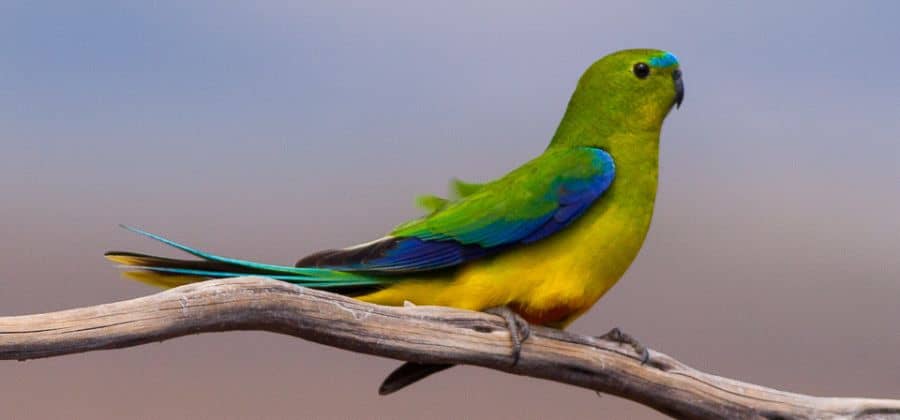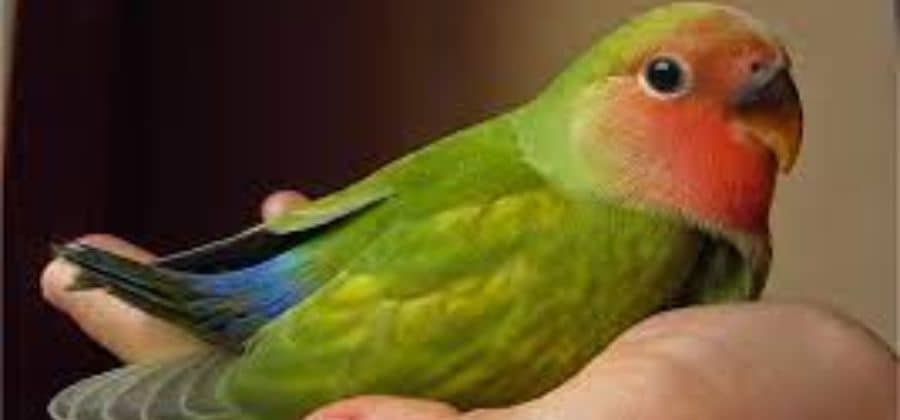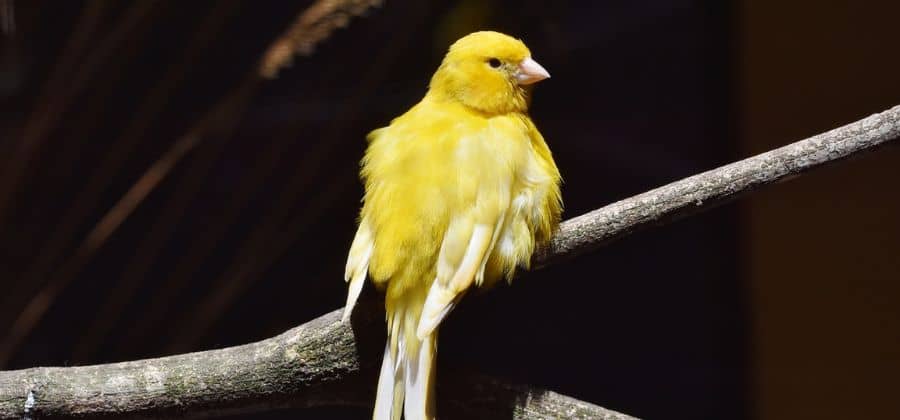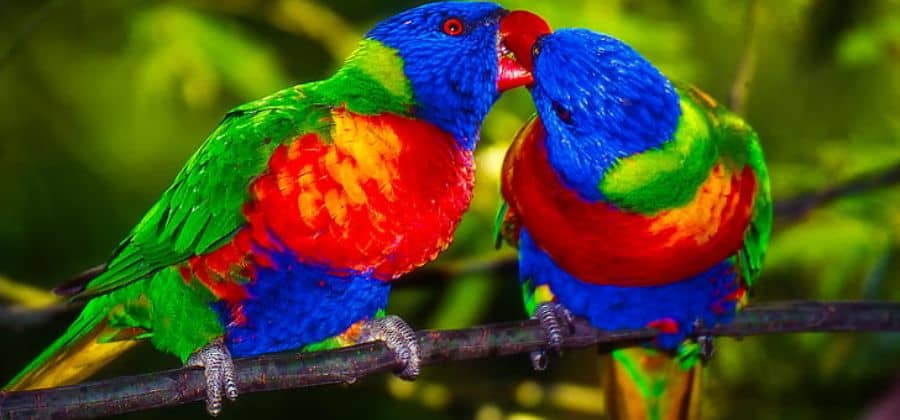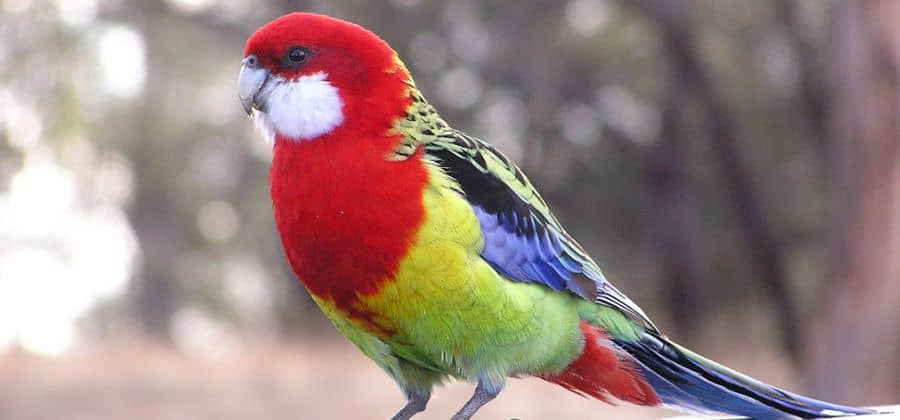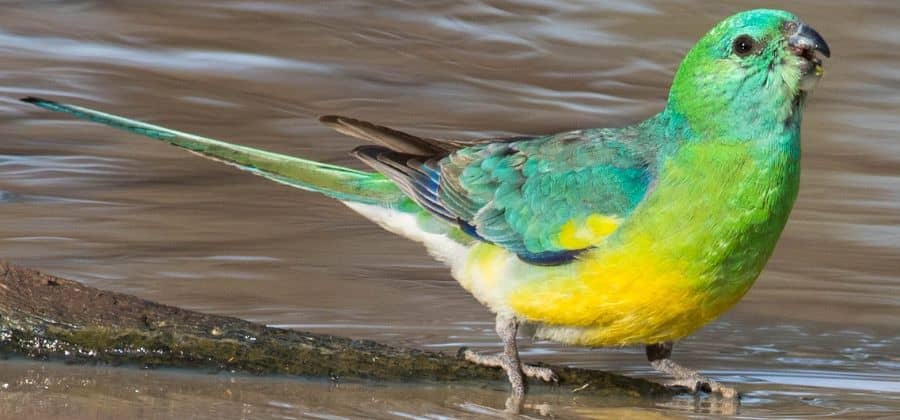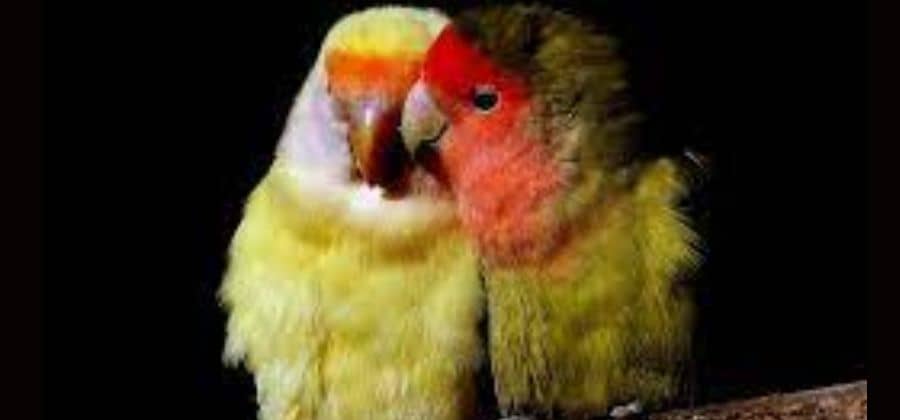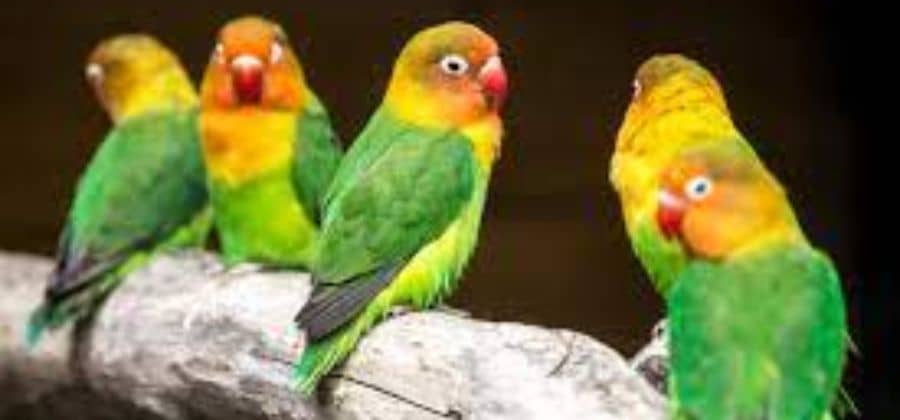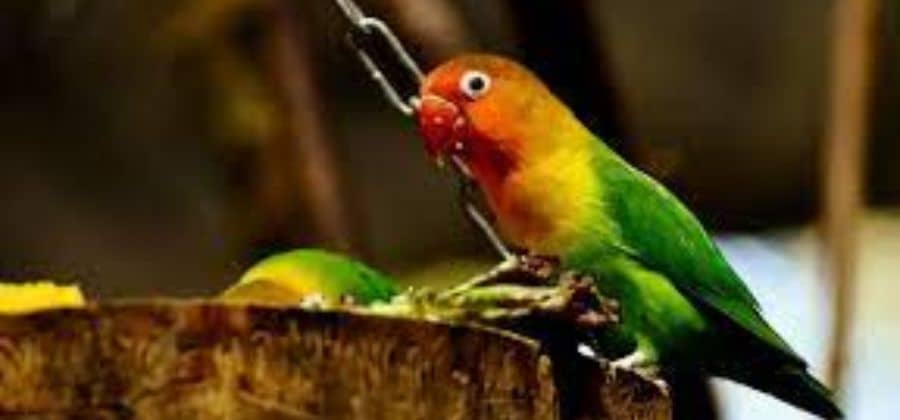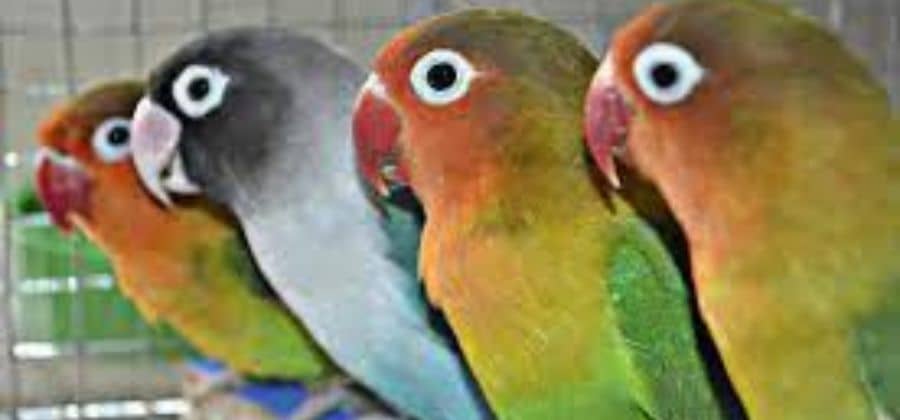Info
These miniature Passerine parrots are called little green sparrows due to their similar size and body type. But at the same time, the birds are distinguished by their pronounced green color. Despite their miniature size, the birds are not easy to care for since they require aviaries to live. If the parrots are provided with the necessary living conditions to the maximum, they will become a wonderful decoration for the home and excellent friends for the breeder.
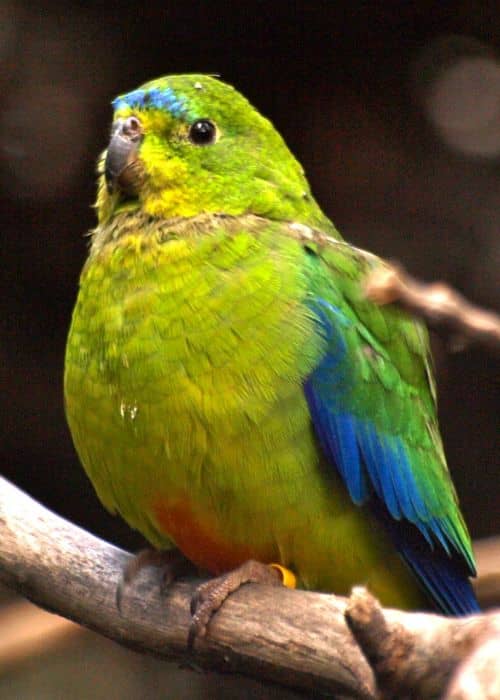
Credit: Flickr
Features and appearance
| Name and classification | Species Passerine parrot (blue-tailed) Forpus passerinus Genus Passerine parrot Forpus Family Psittacidae Order Parrots Psittaciformes Class Birds Aves |
| Bird length | From 0.12 to 0.15 m |
| Wings | The flight feathers reach the tail tip. |
| Adult weight | 25-35 g |
| Color | Green plumage predominates with the inclusion of blue feathers on the lower back and rump. The plumage below is paler than above. |
| Beak | Pink, widened on the sides. |
| Eyes | Dark brown |
| Paws | Strong, short, cream color. |
| The tail is a distinctive feature | Shortened, rounded, reaches a length of 5 cm. |
| Features of the view | They are considered the quietest parrots that never make loud sounds. |
| Sex differences | • Males, unlike females, have blue feathers on the inside of their wings. • Females are paler in color. |
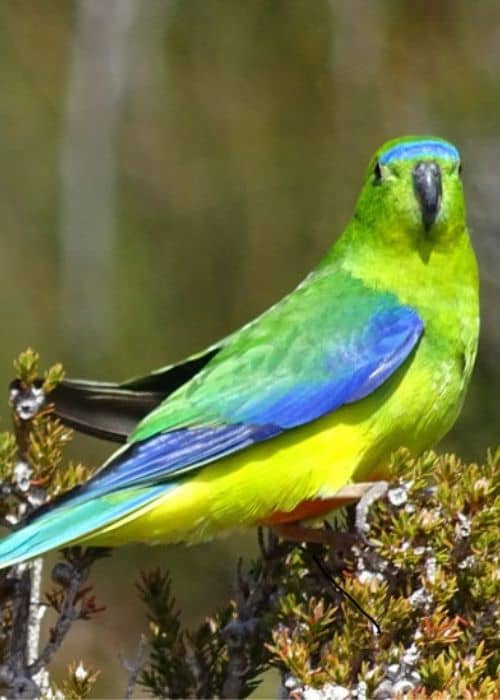
Credit: Wildcaretas.org.au
Varieties
The genus Passerine parrots unites 9 species of birds, some of which are further divided into subspecies.
| Passerine Forpus passerinus | • Forpus passerinus cyanochlorus• Forpus passerinus cyanophanes • Forpus passerinus deliciosus • Forpus passerinus passerinus • Forpus passerinus viridissimus |
| Yellow-faced Forpus xanthops | |
| Mexican Forpus cyanopygius | • Forpus cyanopygius cyanopygius• Forpus cyanopygius insularis |
| Lesson’s parakeet Forpus coelestis | |
| Spectacled Forpus conspicillatus | |
| Blue-winged Forpus xanthopterygius | • Forpus xanthopterygius xanthopterygius• Forpus xanthopterygius flavissimus • Forpus xanthopterygius crassirostris • Forpus xanthopterygius olallae • Forpus xanthopterygius flavescens • Forpus xanthopterygius spengeli |
| Dark-billed Forpus modestus | |
| Sclateri Forpus sclateri | |
| Large-billed Forpus crassirostris |
Habitat and lifestyle in nature
Passerine parrots inhabit the territories of the following countries:
- Guyana,
- Suriname,
- Colombia,
- Bolivia,
- Venezuela,
- Trinidad,
- Jamaica,
- Barbados,
- Martinique,
- Antila.
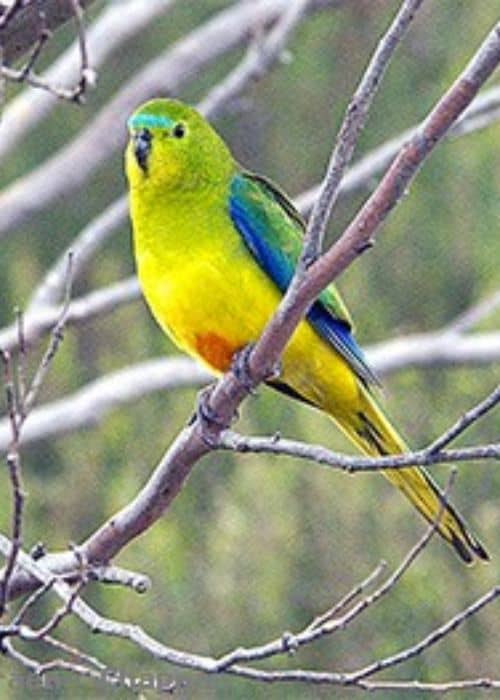
Credit: pinterest.nz
Bird populations are found in mangroves or among low-growing forests near rivers and sea coasts.
They live in flocks of up to 20 individuals. They spend the whole day searching for food and water. The main diet of birds is greens, fruits, seeds, insects, larvae, centipedes, and mollusks.
Reproduction
The breeding season lasts from June to November. During this time, the birds manage to build a nest for themselves in an abandoned hollow, or termite mound and lay eggs. One clutch can contain up to 6 eggs. Incubation lasts 21 days. Chicks hatch at different times, depending on the laying interval. Feathered parents both participate in the feeding process. The care of older birds ends when the young birds reach 1.5 months of age, when they begin to leave their native nest.
Lifespan
The average lifespan of passerine parrots in nature is about 10–12 years. But feathered pets with good care live up to 25 years.
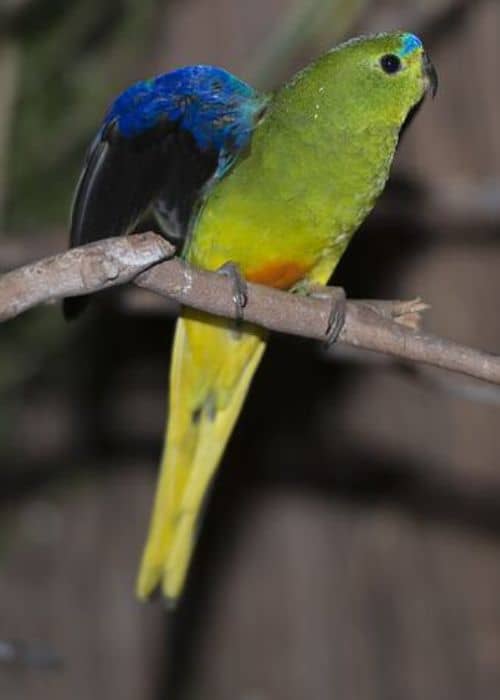
Credit: Museums Victoria
Features of keeping at home
Passerine parrots adapt well to home life if they are given proper care. The breeder should take care in advance about arranging housing for the birds, organizing cleaning in it, as well as their diet.
Cell
The passerine parrot is by nature a very active bird, which constantly needs to move and fly. You can ensure such activity if you equip your pet with an enclosure or a large cage.
The optimal dimensions of a bird’s home for 1 individual are from 0.35×0.45×0.80 cm. The cage material is metal. The shape is rectangular with a flat or dome-like top.
The cage (aviary) is equipped with the following equipment:
- feeders;
- drinking bowls;
- poles;
- toys;
- bath for bathing;
- mineral stone (sepia).
Place the cage with the parrot in a place where there are no drafts, stuffiness, cold, or direct sunlight.
Recommended microclimate:
- Air temperature – 18-25 0 C.
- Humidity 60-80%.
In summer, it is useful to take the bird outside or set up an outdoor aviary.
Clean the bird’s home daily. General cleaning is carried out once a month. Disinfection – once every six months.
Nutrition
The diet should include:
- Store-bought mixtures for small species of parrots.
- Seeds (canary grass, hemp, safflower).
- Grain (millet, buckwheat, oats, wheat) and microgreens from it.
- Vegetables.
- Fruits and dried fruits.
- Berries.
- Greens and herbs.
- Shoots of young plants, tree branches.
- Protein supplements (boiled eggs, low-fat cottage cheese).
- Honey.
- Porridge.
- Nuts.
- Vitamin and mineral supplements.
Domestication
It is worth noting that most passerine parrots living in captivity are individuals stolen by people from a nest in the wild. It is believed that these are the parrots that best take root and bond well with humans. It is more difficult for adult birds to adapt to being kept at home.
Feathered pets are distinguished by a quiet voice, which is very impressive to most poultry farmers.
The nature of the birds is calm, but during the breeding season they become more cocky and aggressive. To avoid fights between feathered competitors, it is recommended to keep them alone or in pairs. If a feathered pet lives alone, it will need to pay more attention to communication, otherwise it will fall into depression (it will begin to feel sad, pluck itself, and spoil its equipment and cage). A tamed bird, with which they constantly communicate and play, is capable of imitating human speech (it can learn up to 20 words).
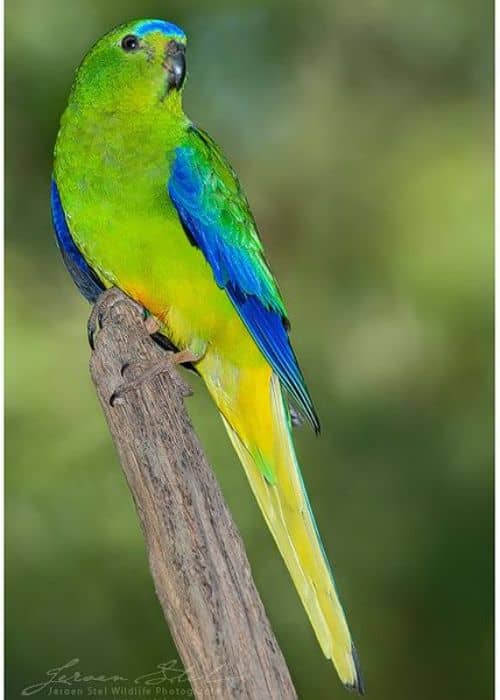
Credit: pinterest
Breeding
Parrots become sexually mature after one year. The ability to reproduce in birds is very high, but in order for them to produce offspring, it is necessary to organize the necessary conditions:
- Increase daylight hours (at least 12 hours).
- Enrich your diet with protein supplements (small insects, larvae, microgreens, sprouted grains).
- Move the couple into a spacious enclosure.
- Install a nesting house (0.20×0.22×0.25 m).
- Place sawdust, tree branches, and hay at the bottom of the nest so that the birds can build it.
During incubation and feeding of the brood, it is recommended not to disturb the birds often. When the strong chicks begin to fly out of the nest, they are removed from their parents.
Despite the fact that a female can lay up to 3 clutches for a year if all the above requirements are met, there is no need to abuse this, because too frequent incubations are harmful to the health of the birds.
How to choose, cost
The cost of passerine parrots ranges from $30 to $75. This price makes the birds accessible to a wide range of people.
It is better to make purchases in professional nurseries or licensed points of sale (pet stores). When purchasing, you should pay attention to the general appearance of the birds (they must be active, with sparkle in their eyes and beautifully arranged plumage) and the presence of accompanying documents.
The Passerine Parrot is a miniature bird with a quiet voice that is playful and sociable. The bird is not particularly demanding in care, so it is suitable for home keeping even for beginners. Anyone who has already acquired such a pet should remember to spend more time with him and not let him get bored. The feathered friend, in turn, will delight you with his tricks and will even be able to exchange a few words.
Also Cheak: Pink Bellied Parrot
Also Cheak: Names for canaries
Follow as: Facebook

